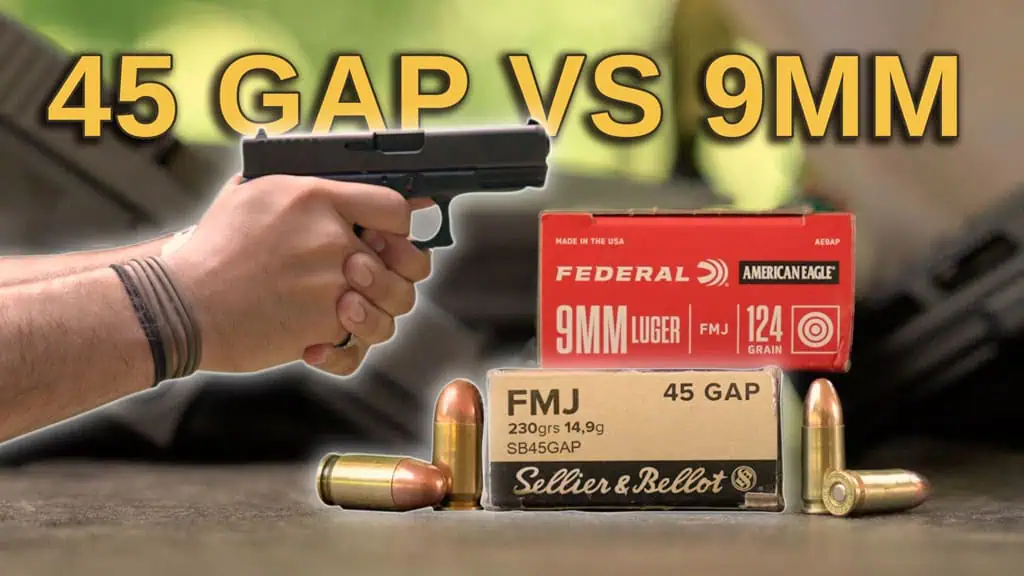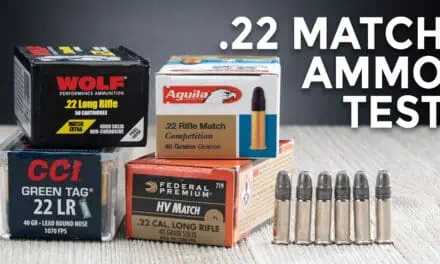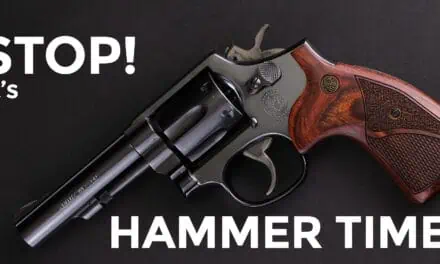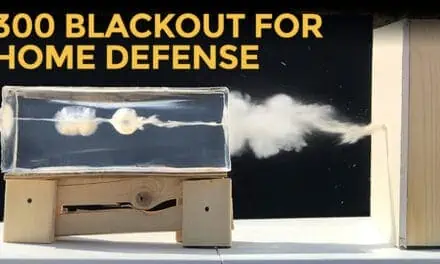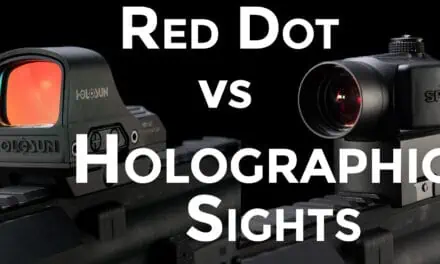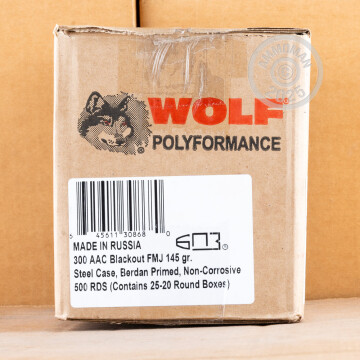45 GAP vs. 9mm
Apples to oranges? You bet your sweet bippy it is. The 45 GAP is an altogether more powerful cartridge, loaded with a heavier, harder-hitting bullet that’s all but guaranteed to do more damage to its target.
But we’re not setting out to declare one of these rounds “better” than the other. We’re only here to help you decide which you would prefer for target shooting and/or personal protection.
Should you choose the 9mm, a .355 caliber cartridge that has benefitted from almost 125 years of technological advancement since its introduction at the turn of the 20th century, and which is currently the most popular centerfire handgun cartridge in the United States? Or should you choose the 45 GAP, which is essentially a shortened version of the .45 caliber 45 ACP that was developed in partnership between Glock and Speer in 2003?
Let’s grease up this pig and open her pen. It’s cartridge comparin’ time.
45 GAP vs. 9mm: Physical Dimensions
These two rounds’ differences become plain as day once you place them side by side. The 45 GAP’s .452” diameter bullet makes it approximately 0.10” wider in diameter – the reason why a 5.47” tall 45 GAP Glock 37 holds 10 rounds in its standard magazine, whereas a 0.43” shorter 9mm Glock 17 holds 15 rounds in the same.
| 45 GAP | 9mm | |
|---|---|---|
| Case type | Rebated, straight | Rimless, tapered |
| Bullet diameter | .452” | .355” |
| Case length | .755” | .754” |
| Overall length | 1.070” | 1.169” |
| Max pressure (SAAMI) | 23,000 psi | 35,000 psi |
Although wider in diameter, the 45 GAP does boast the shorter overall length: 1.070”, as opposed to 1.169”. It’s significantly shorter than the 45 ACP (1.275”) it was designed to improve upon, albeit not so much shorter than the 9mm that 45 GAP handguns’ grips are noticeably narrower.
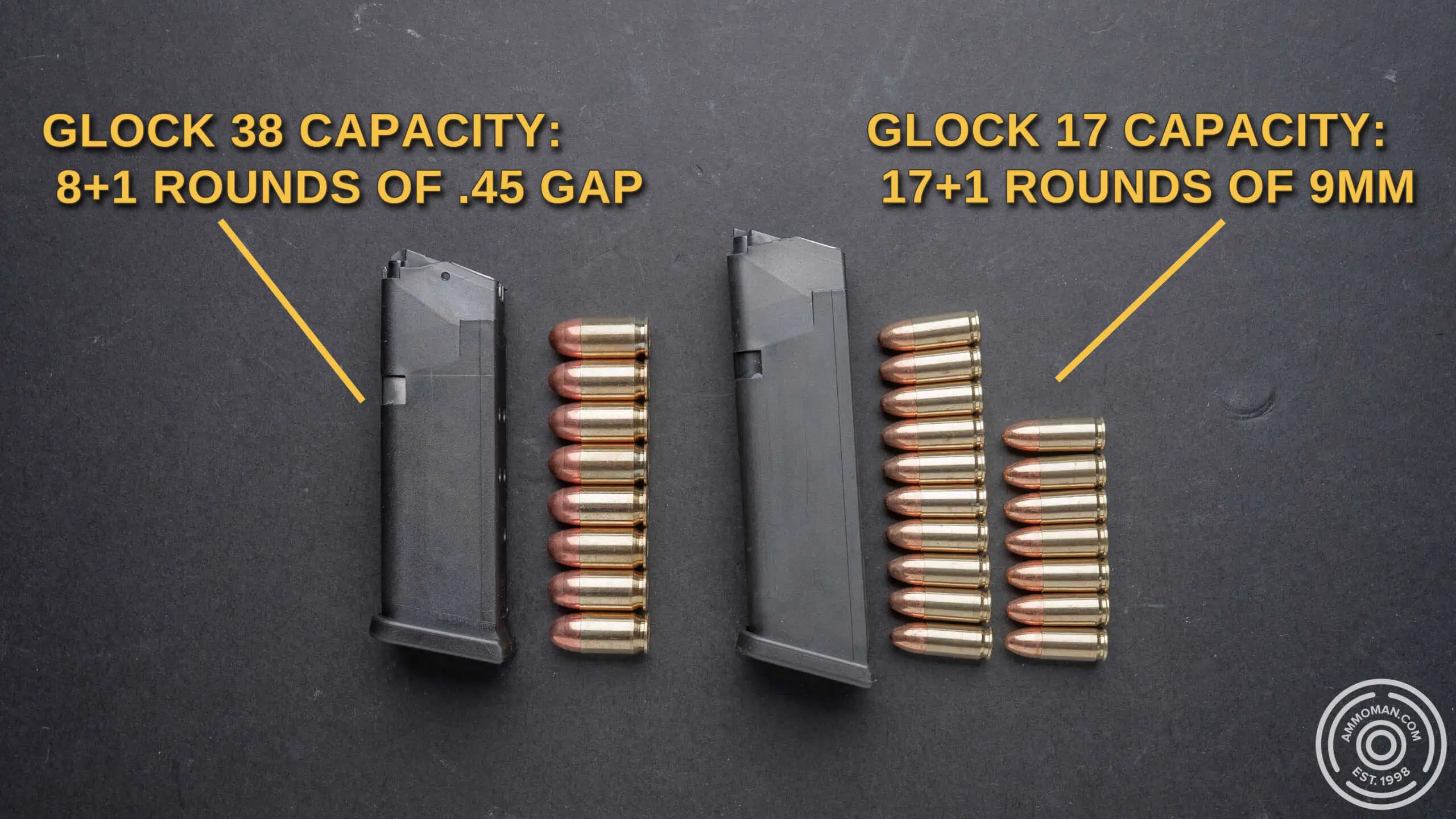
The 45 GAP magazine has 50% less capacity compared to a Glock 17 magazine with 9mm.
In short, the 45 GAP’s .45 caliber bullet is a perk and a setback. It certainly inflicts a wider, more injurious wound channel (which we’ll touch on momentarily) – but that comes at the cost of a lower-capacity magazine. Trust us: If you ever fire in defense of your life, you won’t wish you had fewer rounds in your mag.
45 GAP vs. 9mm: Ballistic Performance
What happens to these two rounds’ bullets once they exit the muzzle? We can’t say so with absolute certainty, as ballistic performance is dependent on barrel length, atmospheric conditions, and other factors which fall outside the scope of this already very long article.
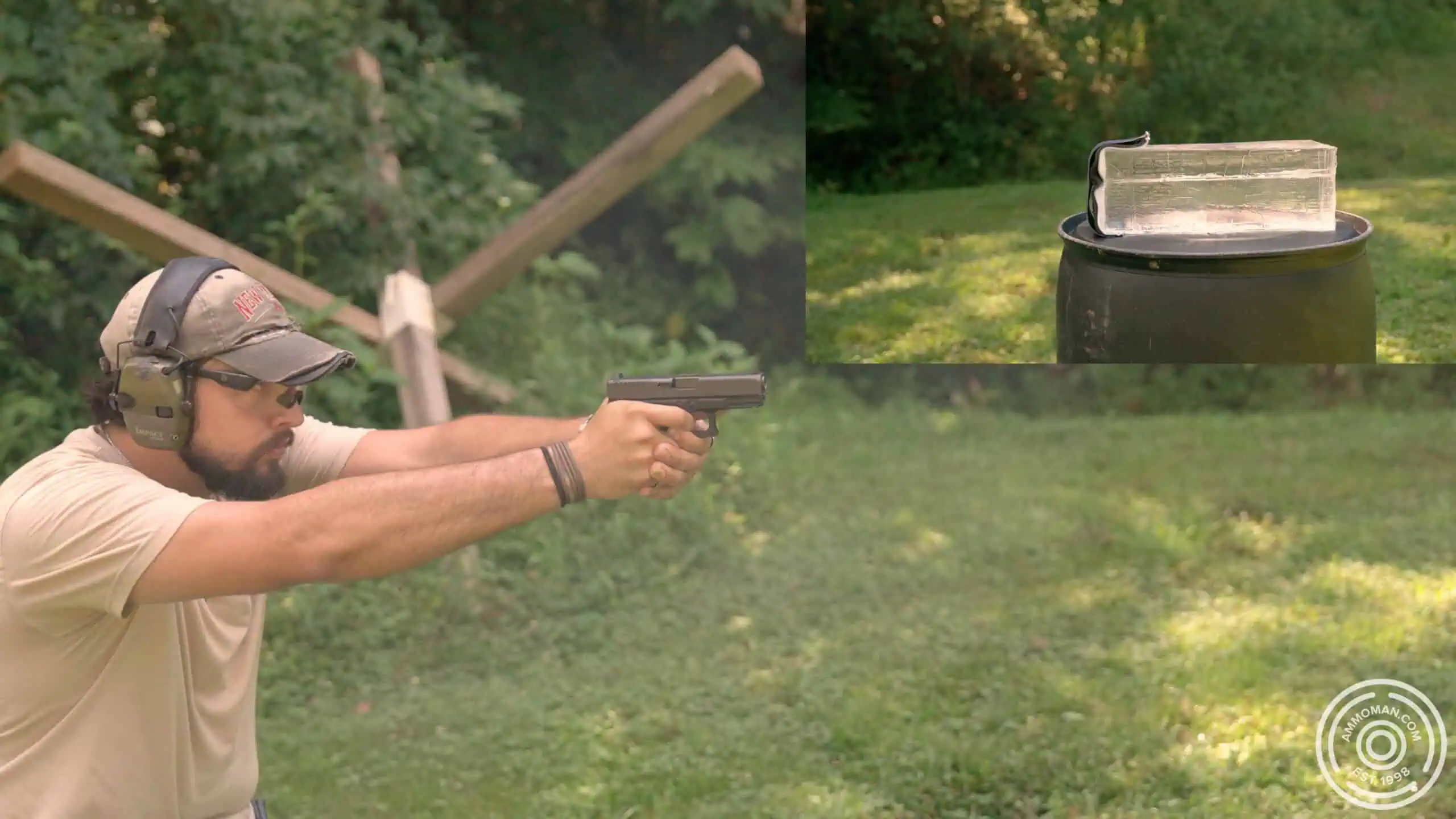
Shooting .45 GAP at clear ballistics gel.
With that in mind, we can calculate several comparable cartridges’ ballistic performance with reasonable certainty. Here are tables for six matched rounds: two lightweights (185 vs. 115 grains), two middleweights (200 vs. 124 grains), and two heavyweights (230 vs. 147 grains).
| 45 GAP Speer 185gr TMJ; 4" bbl; 0.097 G1 BC | 9mm Speer 115gr TMJ; 4" bbl; 0.181 G1 BC | |||||
|---|---|---|---|---|---|---|
| Range (yds) | Velocity (fps) | Energy (ft lbs) | Elevation (in) | Velocity (fps) | Energy (ft lbs) | Elevation (in) |
| 0 | 1060 | 462 | -0.19 | 1200 | 368 | -0.19 |
| 25 | 999 | 410 | 1.01 | 1146 | 335 | 0.74 |
| 50 | 951 | 372 | 0.01 | 1100 | 309 | 0.01 |
| 75 | 910 | 340 | -3.38 | 1060 | 287 | -2.51 |
| 100 | 874 | 314 | -9.4 | 1026 | 269 | -6.98 |
| 125 | 842 | 291 | -18.26 | 996 | 253 | -13.5 |
| 45 GAP Speer 200gr TMJ; 4" bbl; 0.104 G1 BC | 9mm Speer 124gr TMJ; 4" bbl; 0.162 G1 BC | |||||
| Range (yds) | Velocity (fps) | Energy (ft lbs) | Elevation (in) | Velocity (fps) | Energy (ft lbs) | Elevation (in) |
| 0 | 990 | 435 | -0.19 | 1090 | 327 | -0.19 |
| 25 | 946 | 397 | 1.13 | 1047 | 302 | 0.91 |
| 50 | 908 | 367 | 0.02 | 1011 | 282 | 0.01 |
| 75 | 875 | 340 | -3.74 | 980 | 264 | -3 |
| 100 | 845 | 317 | -10.33 | 952 | 250 | -8.29 |
| 125 | 817 | 296 | -19.96 | 927 | 237 | -15.97 |
| 45 GAP Magtech 230gr FMJ; 5" bbl; 0.201 G1 BC | 9mm Magtech 147gr FMJ; 4" bbl; 0.201 G1 BC | |||||
| Range (yds) | Velocity (fps) | Energy (ft lbs) | Elevation (in) | Velocity (fps) | Energy (ft lbs) | Elevation (in) |
| 0 | 837 | 358 | -0.19 | 990 | 320 | -0.19 |
| 25 | 822 | 346 | 1.53 | 966 | 305 | 1.08 |
| 50 | 809 | 334 | 0.02 | 945 | 291 | 0.02 |
| 75 | 795 | 323 | -4.82 | 925 | 279 | -3.49 |
| 100 | 782 | 312 | -13.09 | 906 | 268 | -9.53 |
| 125 | 770 | 302 | -24.91 | 889 | 258 | -18.22 |
It comes as no surprise that the 9mm’s characteristically higher muzzle velocities beget flatter trajectories. In the simplest terms possible, the 9mm’s faster-moving bullet covers more ground in a shorter amount of time than the 45 GAP’s slower-moving one. The 9mm therefore exhibits less drop, which manifests itself as a flatter trajectory.
Take all of this with a grain of salt. Sure, you don’t have to compensate for bullet drop as much while you’re firing a 9mm handgun, although the difference between the two rounds’ trajectories is quite small. Moreover, most shooters will never attempt covering several dozen yards with a handgun. Bullet drop is extremely important while you’re shooting long distance, but not nearly as much as when you’re firing a handgun.
Declaring one round more accurate than the other would be silly. Either is fully capable of striking a close-range target so long as it’s fired by a competent marksman.
45 GAP vs. 9mm: Stopping Power
“Shot placement.” The second you start discussing whether one cartridge is more effective at stopping a threat than another, some reasonable individual takes it upon himself to interject by pointing out the necessity of good shot placement.
That reasonable individual isn’t wrong. We’d take a 50 BMG to the foot over a 22 LR to the eye any day of the week. We might not be dancing the Charleston anytime soon, but … well, you get our point.
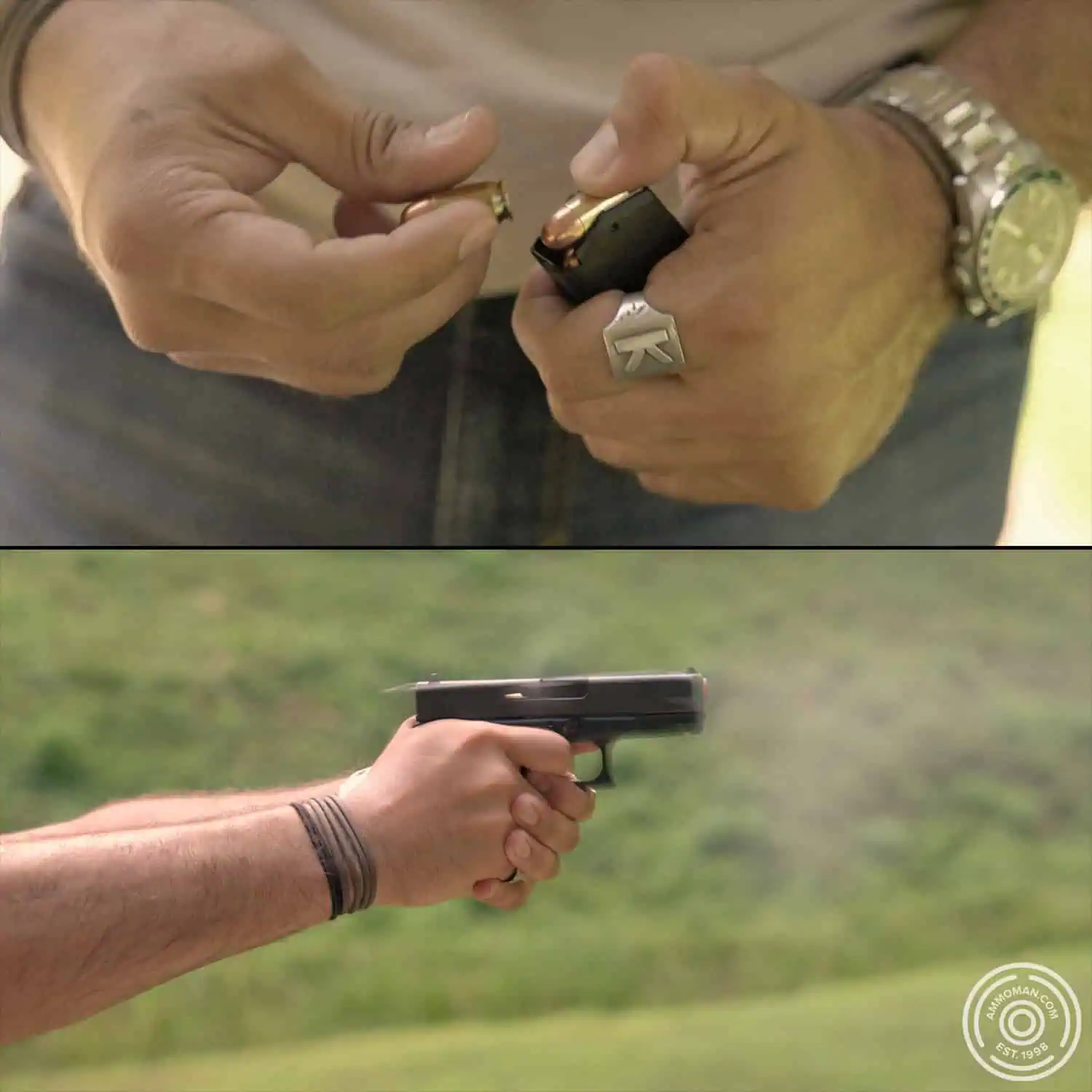
Not all cartridges are created equal!
Shot placement notwithstanding, which of these two rounds has better stopping power? The 45 GAP, unarguably. Its bullet is around 0.1” wider, and therefore poised to gouge out a more injurious wound channel. Its bullet is also substantially heavier, and therefore inclined to conserve more of the momentum requisite for deep penetration.
Most significantly, the 45 GAP strikes its target with higher kinetic energy. Compare the muzzle energies of the two middleweight rounds contrasted earlier, and you’ll see that the 45 GAP’s is over 100 ft lbs higher: one-third more powerful!
Minimum striking energy of 220 to 300 ft lbs is typically advised for self-defense. With that in mind, how far away can our examples conserve the average of those figures?
| 260 ft lbs | |
|---|---|
| 45 GAP Speer 185gr TMJ | 165 |
| 45 GAP Speer 200gr TMJ | 177 |
| 45 GAP Magtech 230gr FMJ | 246 |
| 9mm Speer 115gr TMJ | 114 |
| 9mm Speer 124gr TMJ | 82 |
| 9mm Magtech 147gr FMJ | 120 |
Where Energy Matters Most
We’re not suggesting that you will ever need to defend yourself over such long distances. It’s highly unlikely that anyone will ever pose a threat to you from 100+ yards away (and even less likely that you could convince a judge of the same). That aside, the 45 GAP certainly remains effective for defense over farther distances than the 9mm.
We must give credit to the 9mm where its due: it has a higher sectional density (a numeric measure of a bullet’s capacity for penetration, derived from mass and diameter). The 9mm’s lightweight 115 grain bullet has sectional density of 0.130; the 45 GAP’s lightweight 185 grain bullet, 0.129. 9mm ammo’s heavyweight 147 grain bullet has sectional density of 0.167; the 45 GAP’s heavyweight 230 grain bullet, 0.161.
These aren’t night-and-day differences in sectional density, though, and they’re ultimately unlikely to make themselves apparent during real life scenarios. To reiterate: The 45 GAP has superior stopping power.
45 GAP vs. 9mm: Recoil
The 45 GAP’s stronger punch comes at a cost: stronger kick.
Lighter recoil is always preferable during a life-or-death fracas. It is accompanied by less muzzle flip (i.e. upward jerking motion of the barrel on ignition), thereby reducing the amount of time the shooter has to spend restoring their aim in between shots. In simpler terms, less recoil equals faster accurate fire.
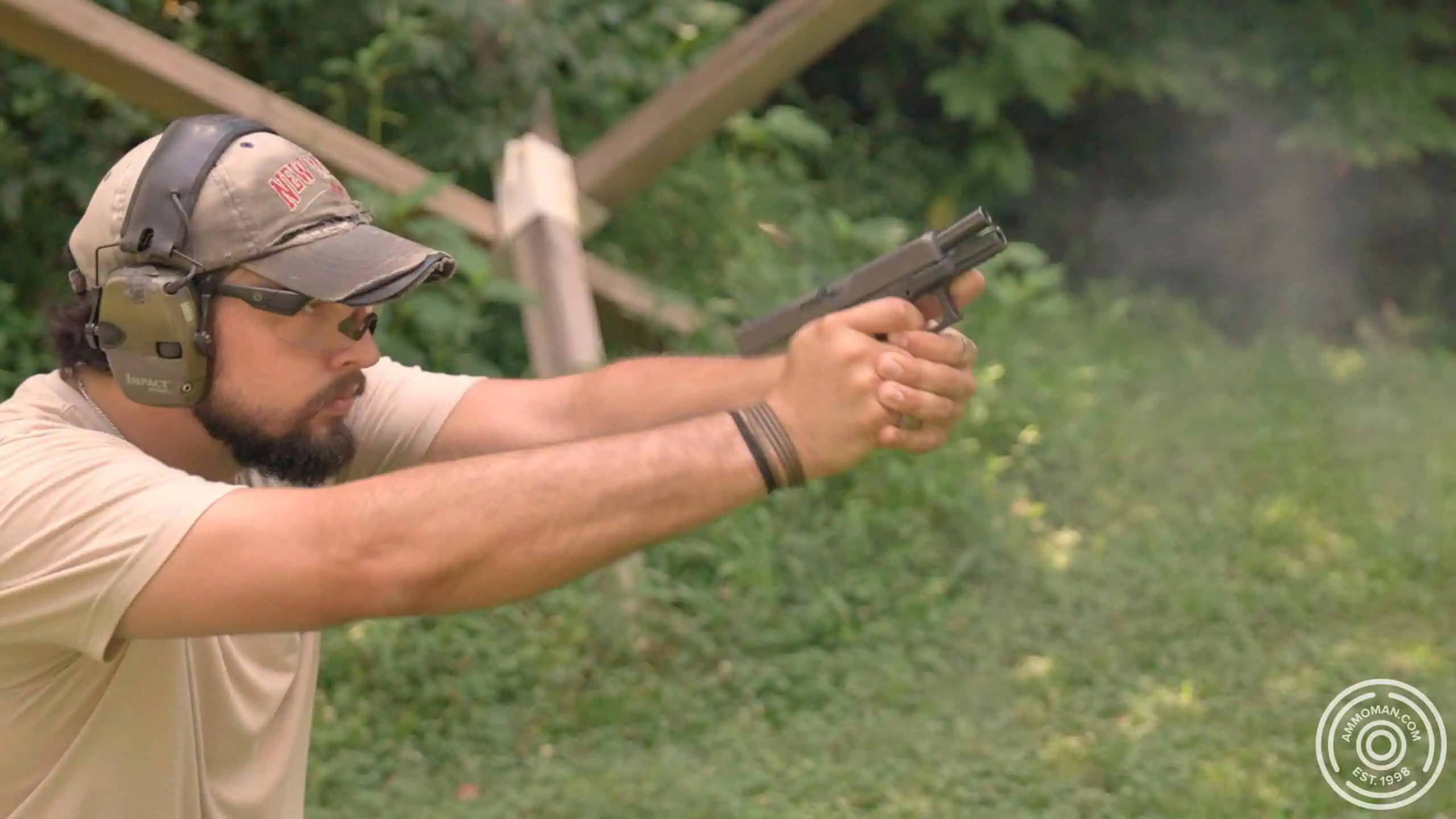
The Glock 38, feels more “snappy” compared to a similarly sized 9mm.
How much stronger is the 45 GAP’s kick, exactly? We can objectively quantify free recoil energy once we know four variables: muzzle velocity, bullet weight, propellant weight, and firearm weight. For the sake of this comparison, we’ll assume we’re firing two hypothetical 2.30-pound pistols (a loaded Glock 37 weighs 2.20 pounds; a loaded Glock 17, 2.02 pounds). Note that we’re also assuming the weights of our comparison rounds’ propellant charges, which are probably a little different in reality.
| Propellant Weight (gr) | Recoil Energy (ft lbs) | |
|---|---|---|
| 45 GAP Speer 185gr TMJ | 5 | 6.74 |
| 45 GAP Speer 200gr TMJ | 7 | 7.49 |
| 45 GAP Magtech 230gr FMJ | 8 | 7.45 |
| 9mm Speer 115gr TMJ | 4 | 3.44 |
| 9mm Speer 124gr TMJ | 5 | 3.54 |
| 9mm Magtech 147gr FMJ | 6 | 4.25 |
A pretty cut and dry result, right there. The 9mm generates about half as much recoil energy as the 45 GAP, and is therefore significantly more comfortable to fire and easier to control.
Don’t interpret this as meaning the 45 GAP has behemoth recoil. In fact, its kick is roughly identical to that of the 45 ACP, which was the U.S. Armed Forces’ standard sidearm cartridge for over seven decades. You should favor the 9mm if you’re averse to recoil – or in possession of a smaller, lighter body – but most anyone could bear the 45 GAP’s kick. Indeed, it was specifically developed as a way of giving .45 caliber performance to law enforcement officers with smaller hands.
45 GAP vs. 9mm: Availability and Cost
The 45 GAP has not gained widespread popularity since its introduction, largely because its purported advantages over its predecessor aren’t very large. Multiple companies still manufacture 45 GAP ammo, and finding it for sale during any time other than an ammo shortage isn’t difficult. Even so, at this rate, we expect it to go the way of the dodo bird within the coming few decades.
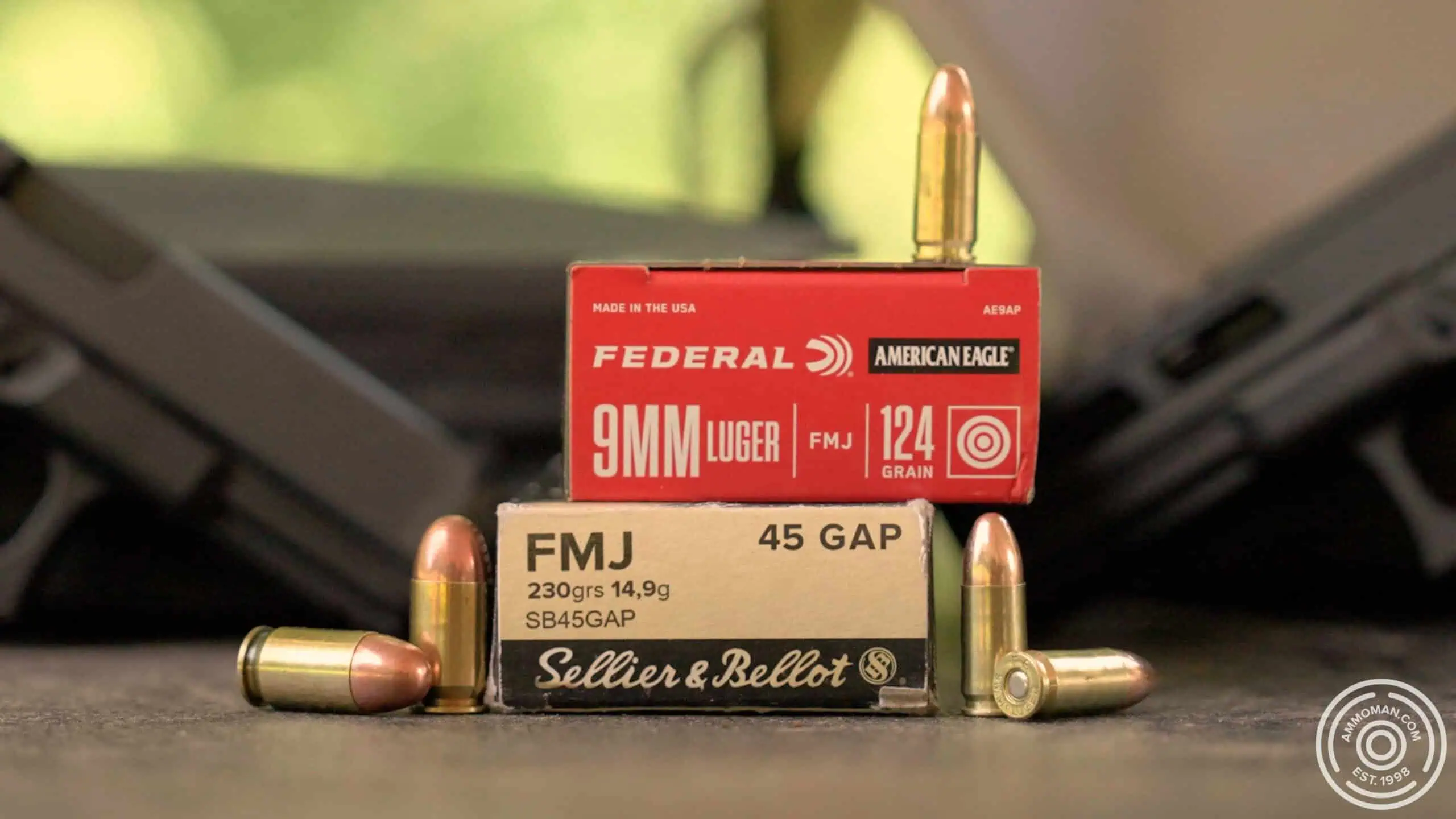
.45 GAP did not pick up even a fraction of the popularity of 9mm.
The 9mm is the most popular centerfire handgun cartridge on the planet. All branches of the U.S. Armed Services issue it. Countless law enforcement agencies favor it as well. We don’t suppose it will ever become obsolete. As you have already surmised, finding 9mm firearms and ammo for sale is a cakewalk.
The 9mm cartridge is also cheaper. A box of Speer Gold Dot 9mm costs about 80% as much as a box of Gold Dot 45 GAP (as of early 2025). This is due to the economy of scale (manufacturers can charge relatively less for ammo they produce in greater quantities), as well as the fact that the 9mm cartridge contains significantly less lead and copper.
Conclusion
The ubiquitous 9mm is the flatter-shooting, lower-recoil, and less-expensive cartridge.
The 45 GAP exhibits steeper bullet drop and stronger recoil. It costs more, is harder to find for sale, and is available in far fewer varieties. Assuming two magazines of the same length, the 45 GAP one would hold fewer rounds. But the 45 GAP’s bullet does hit substantially harder, which alongside its greater width means it’s poised to inflict far more harm to its target.
You’re entitled to prefer any handgun cartridge you like. That said, we wouldn’t recommend the 45 GAP to anyone. Sure, it’s shorter than a 45 ACP round, which is why a 45 GAP handgun’s grip can be narrower. But the difference isn’t night and day, and the 45 GAP’s failure to capture a significant share of the market has doomed it to become totally obsolete in the not-too-distant future.
At the end of the day, it’s a no brainer. You would do much better siding with America’s favorite pistol cartridge over a niche one.

